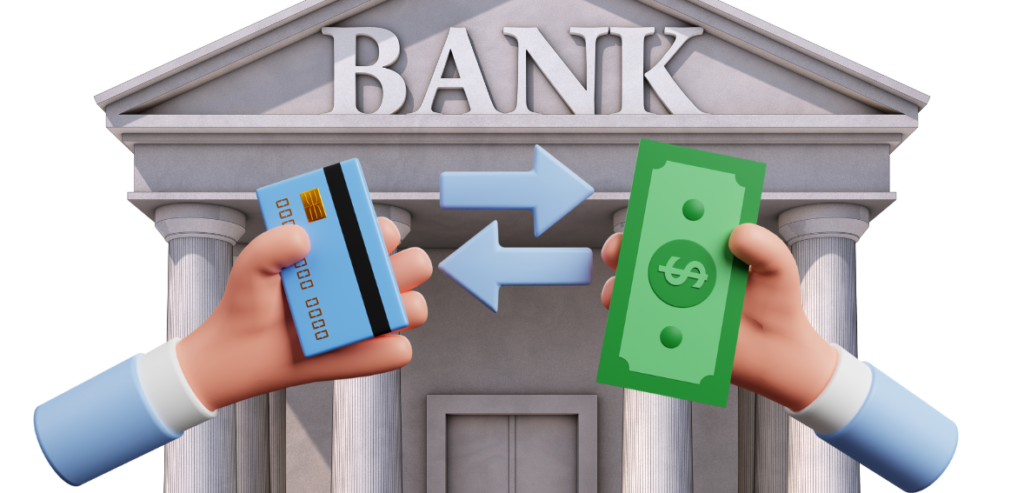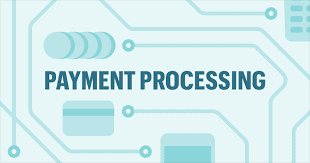Payment processing is the collection of steps that occur when digital payment transactions are conducted between a merchant and a customer. While a merchant might typically be a business accepting payments from its customers, a merchant can also include any individual or entity accepting payments for goods or services. Payment processing is the service that enables merchants to accept payments from other entities, resulting in a debit to the customer account and a credit to the merchant account.
Completing your payments through a credit card may seem as simple as swiping the card at the POS or payment with a single tap of a button, but the actual payment processing steps are more complex. The steps of payment processing happen behind the scenes to process credit and debit card transactions.
How Payment Processing Works in Six Steps
While the technology behind payment processing can be complex, a payment processing transaction can be simply and completely explained in just five steps. Merchants looking for a “payment processing meaning” should understand these steps.

1. A merchant account must be established with a provider of payment processing services.
Examples of payment processing companies include banks, independent sales offices (ISOs), merchant services providers (MSPs), and payment facilitators (payfacs). Whether in-person or online, the customer pays for goods or services by presenting a credit card, debit card, or check. Obviously, in the case of cash, no processing is necessary.
2. The customer presents digital payments to the merchant.
The customer presents a digital form of payment to the merchant, such as a debit card or credit card. Other options include card details contained in an NFC digital wallet such as Apple Pay or Google Pay. Checks can also be presented and deposited electronically, or bank account and routing information can be supplied for ACH transactions.
3. Cardholder data is secured through encryption and transmitted for the transaction to be authorized.
Data security is extremely important and governed by PCI compliance (PCI DSS) standards. Cardholder data presented to the merchant is encrypted securely by the credit card terminal, point of sale, or mobile device before transmission to the payment processor for authorization. There are many technologies for ensuring the security of payment processing transactions, including secure payment gateways and EMV chip card technology.
4. An approval or decline is returned to the merchant.
The authorization stage of the payment processing transaction is a key step in the process. The cardholder data and transaction information are securely transmitted from the merchant acquirer to the card issuing bank for approval or decline. If sufficient funds are available in the cardholder account and the transaction passes fraud screening checks, approval is returned. If funds are not available, or the issuing bank suspects fraud, the transaction will be declined.
5. The transaction is captured and the batch is settled.
An approved authorization is not all that is required for a successful transaction. Sometimes customers may see “pending transactions” when viewing their credit card account through online banking. These pending transactions are the result of successful authorizations. These pending transactions will show up for 3-7 days. The next step in the process is for the merchant to capture the transaction and settle their batch. Most times this happens automatically, either through the gateway or terminal, but sometimes manual intervention may be required. Authorizations that are voided or never settled will eventually drop off.
5. The merchant is funded for the transaction.
For the merchant, this is the most important step in payment processing. Funds are released to the merchant once the transaction is successfully authorized, captured, and the transaction batch is settled. In most cases, funds are deposited the next day, but some processors may take 2-3 days or more to release and deposit funds. Host Merchant Services offers next-day funding to merchants.
Examples of Payment Processing Companies
Payment processing companies are responsible for validating the card transaction so that money can be deducted from the customer’s bank account and transferred to the merchant’s bank. The entire process is completed within a few seconds. The end result is the completed sale for the business and a quick payment transfer for the customer. What are some examples of payment processing companies?

- ISOs / MSPs – An independent sales office or merchant services provider, like Host Merchant Services
- Banks – Many banks offer merchant services.
- Payment Facilitators – These companies offer easy-to-obtain merchant accounts with higher fees – such as Square or Stripe
- Merchant Processors – Large payment processing entities like TSYS, Global Payments, First Data, and Worldpay
What is Transaction Processing?
A payment processing service acts as the intermediary between the merchant and the customers’ bank. The main role of a payment processor is to check and validate the transaction by connecting with the customer’s bank to see if:
- The customer has sufficient funds in their account to pay for the requested goods
- Their card is valid
- Whether their credit card has any limits
Once it has verified this information, the payment processor validates and transaction, and the money is transferred from the customer’s bank to the merchant’s bank account. The payment processor is used for both online digital transactions and in-person payments.

Online payments are safe when payment processors follow the PCI compliance standards to ensure maximum protection for customers and merchants. The payment processor and merchant share responsibility for following security protocols. They ensure that all payments are processed through encrypted connections and they handle data security for recurring payments for merchant using subscription-based models.
How Does Payment Processing Work?
Customers swipe credit cards or send the payment through these cards online. A series of processes take place in the backend electronically until the transaction is completed. The process involves a few parties, including the payment gateway, payment processor, merchant’s bank, customer, and the credit card company.
As mentioned earlier, processing even a single transaction requires these steps. The online process starts with the customers entering their credit card details and proceeds with the payment gateway validating and executing the transaction as requested. The payment is either denied or accepted.
Point of Purchase
Point of purchase is when the customer makes a purchase and chooses a payment method. It can be through credit card, debit card, cash payment, or money order. Since more and more customers are using digital payment methods for transferring payments in-person and online, the demand for payment processors has increased rapidly.
Merchants that accept online payments need a PCI-compliant payment processing service with a secure payment gateway in order to validate and process online transactions safely.
Payment Gateway
A payment gateway is also used for validating transactions, although its main role is to ensure the transfer of communication between the customer’s bank account to the merchant account. The payment gateway shows whether or not the transaction is accepted or denied. It is, however, the payment processor that executes the payment transfer process by collecting the customer’s credit card data from their issuing bank.
Payment Processor
The payment processor also transfers information from the customer’s issuing bank to the merchant account. It is the processor that validates the transfer after verifying the balance on the customer’s card and whether it is available for purchases. Once the processor has verified the transaction, the amount is sent to the merchant’s bank from the issuing bank.
Merchant Account
Once the transaction is validated and approved, the payment processing service provider facilitates the transfer of payment from the customer’s bank to the merchant account. Note that a merchant account and payment gateway are two different services. A merchant account is required to process payments, while the payment gateway handles the secure transmission of cardholder and transaction data over the Internet.
Is There a Difference Between a Merchant Account and a Payment Processor?
Yes, merchant accounts and payment processors are two important elements of online transactions. Your payment processor is responsible for verifying the card information and accepting or denying the transaction. A merchant account is an account established by a business or individual to work with a payment processor to accept payments. So the payment processor is the company that facilitates acceptance of payment, and the merchant account is the account established with the payment processor for the individual merchant.
A payment processor and merchant account are analogous to a bank and a bank account. The bank is the institution that handles money, and a bank account is what the business or individual establishes with the bank. You can also think of a “merchant account” as a “payment processing account” – every individual or business needs a merchant account established with a payment processor in order to process transactions.
What are the Common Payment Options for Online Banking?
If your business accepts online payment, there are quite a few options available for you to process the transactions online. They include:
- Debit or credit card payments: These are the most common payment methods used for processing online and in-person transactions. The money is transferred to the merchant through card swiping at brick-and-mortar stores. The customer enters their card details on the payments page if they are processing the payment online.
- E-wallets: These are the safest and fastest payment options for customers. Payments made through e-wallets take only a few seconds to show on the merchant’s bank account.
- Bank transfers: For B2B transactions, a direct bank transfer is the most convenient mode of payment. The amount is transferred directly from the customer’s bank to the merchant account. This can be through ACH or wire transfer. Although it is not as popular as credit cards and e-wallet transactions, it is still used widely for online payments.
- Crypto payments: Only a few retailers and businesses have integrated crypto payments into their payment and banking services. Crypto payments are anonymous, meaning they do not reveal your identity or any financial information.

Understanding the meaning of payment processing is essential for successfully transacting with digital payments. In a world that is continuing to move away from cash and traditional payment types, businesses must understand their options for payment processing and how they can efficiently conduct transactions and accept payments from customers.

